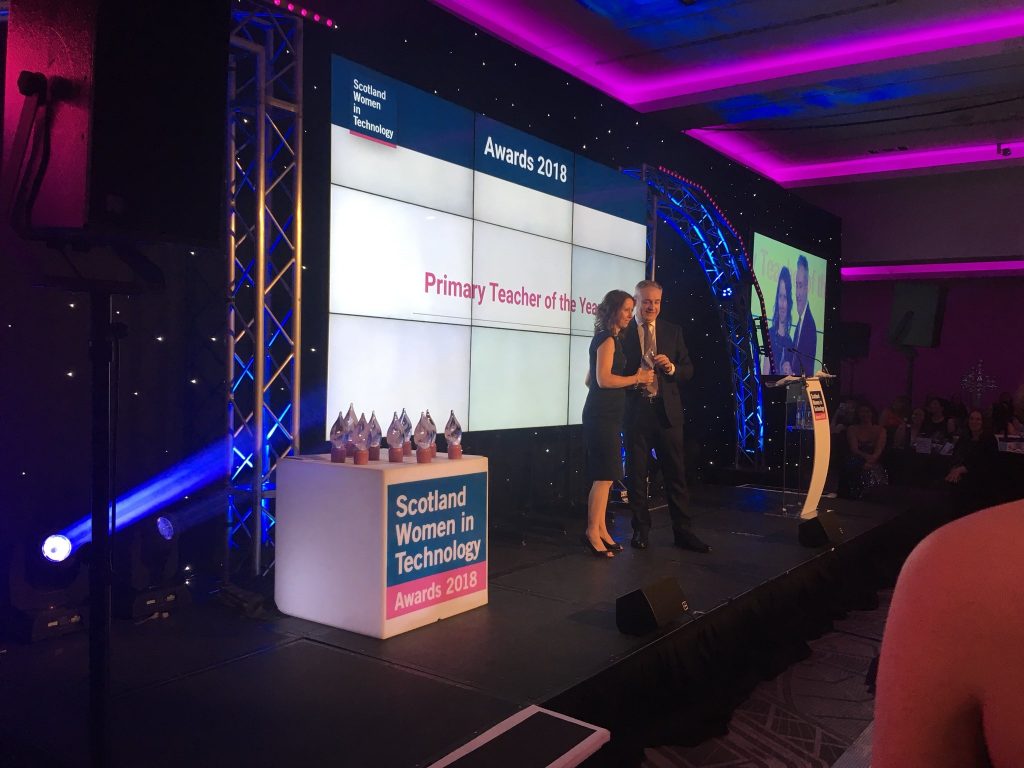Transcript of speech given by Lorna Hay, Scottish Women in Technology (SWiT) Primary Teacher of the Year, from Pitteuchar Primary School Fife at the House of Lords on the 9th May 2019 at the Launch of The Institution of Primary Engineers and the Institution of Secondary Engineers.
Having spent many hours reading and re-reading Professor Perkins’ Review of Engineering as part of my PGCert in Engineering STEM learning, I feel very honoured and incredibly overwhelmed to follow him today!
Our school’s journey with Primary Engineer began around three years ago when my colleague Laura and I took part in their one day Structures and Mechanism training, learning how to teach our learners engineering skills and Engineering Habits of Mind (EHoM) by building their own motorised vehicles.
Following that course, we formed our very first relationship with a local engineer, and since then, we have strived to increase the visibility of engineering within our school – including through The Institution of Primary Engineers (IPrimEng), developing our own PEPS Engineering Cycle – based on the Education Development Process (EDP).
Some of our Primary 7 learners also developed EHoM posters – now rolling out across all classes.
We have now been piloting IPrimEng for 2 years. Last year 98% of learners achieved membership to the institution, retaining their memberships this year through further engagement in engineering activities.
The value that we have placed on IPrimEng to the school is evident from its inclusion as a priority on our School’s Quality Improvement Plan alongside Improving Gender Bias.
Last year as part of my PGCert, my final research study investigated how the implementation of the Institution of Primary Engineers (IPrimEng) might develop pupils’ STEM and employability skills.
I found that engagement in a range of engineering experiences, including ‘authentic learning with engineers’ & ‘tinkering’ – signature pedagogies for the teaching of engineering identified by Bill Lucas, alongside Project Based Learning resulted in increased learner motivation for and enjoyment of engineering.
80% of my Primary 7 (11-12yrs old) learners said that their enjoyment of engineering had increased either a little or a lot over the course of the year. This was validated by parental feedback – one parent told me that her daughter was loving the engineering – so much so that when her iron broke, her daughter asked if she could take it apart to try and fix it!
It wasn’t just my class – across the school my colleagues were telling me that parents were coming to parents night saying that their children hadn’t stopped talking about STEM.
The impact on staff enthusiasm and confidence for engineering has been significant too. One colleague in particular has gone from literally dreading engaging in engineering activities with her infant class to now embracing it wholeheartedly, setting up a Tinker Table in her classroom!
While we are of course striving to develop skills in learners, this enjoyment and enthusiasm for engineering is the first piece of the puzzle; a study by Louisa Kiwana in 2011, suggested that nurturing an enjoyment of engineering could prove to be as significant as attainment in terms of a pupil’s likelihood to pursue engineering further.
It isn’t just through the curriculum that learners are developing skills; through our IPrimEng committee meetings, our STEM ambassadors have opportunities to be involved in shaping our STEM engagement in collaboration with myself and our supporting engineers, developing important organisational and communications skills for the world of work.
Three years ago, when we asked the children “what is an engineer?”, we were overrun with pictures of Bob the Builders in hard hats, now what we see is much more diverse – reflective of the role models that we’ve presented the children with.
In February, during our focus fortnight, we welcomed 17 engineers into school to talk with learners about engineering and support them with their Scottish Engineering Leaders Award entries.
Learners of both genders are now regularly telling us that they want to be engineers – and they can tell us the type of engineers that they want to be – from civil to aeronautical – just ask two of the girls with me today.
Alongside these aspirations, they are developing key skills and habits of mind as they work towards institution membership.
I recently had a Primary 2 (6-7yrs old) girl visit my classroom to show me the fantastic arcade game she had engineered at home from a cereal box. More impressive, was how she used the language of the engineering design process to explain what she had done – 6 years old!
Danny – the youngest of our STEM Ambassadors here today (8 years) impressed our local MSP explaining to her how hydropower works and why it was kinder to the environment.
As Professor Perkins wrote in his review – we need young people to be inspired by the possibilities of engineering, and starting to inspire people at 16 years old is too late – as the ASPIRES project found – if young people are not engaged and enthused by STEM by aged 10, they are unlikely to choose these subjects at 16.
We believe that the framework of IPrimEng provides us with an opportunity to do that.
I’d like to leave you with a quote from Martinez & Stager, authors of Invent to Learn: ‘Children are natural engineers and we can create classrooms to celebrate this fact.’








